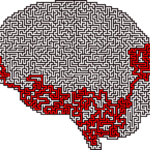Written Whilst Training As A Psychotherapist

Today, I have decided to publish an essay I wrote several years ago as part of my training as a psychotherapist. It was really the turning point for me when I realised that Type 1 Diabetes could actually be curable. I hope that, by publishing it, I may inspire you too to embrace the possibility of healing T1D that lies before us now.
Is psychotherapy relevant in preventing the onset of medical conditions that are not considered to have a psychosomatic root? Discuss with reference to the medical diagnosis of ‘Type 1 Diabetes’.
Introduction
Type 1 diabetes is a chronic, life-altering medical condition that currently affects approximately 400,000 people in the UK (Juvenile Diabetes Research Foundation International, 2010). Recent estimates suggest that at least 29,000 of these are under nineteen years of age and that this incidence rate is expected to double in the UK by 2020 (National Paediatric Diabetes Audit Report, 2016). Despite the large prevalence, little is still known about its aetiology and a cure does not seem imminent. This essay will explore the relevance of psychotherapy to preventing the onset of type 1 diabetes (hereafter referred to as ‘diabetes’). First, diabetes will be defined according to Western medicine’s concepts, highlighting how its foundation is based on Cartesian dualism. From here, psychotherapeutic theories of the body will be explored, with a particular focus on Freudian and Reichian concepts. The limitations of these theories, which are again based on Cartesian dualism, will be discussed and the more holistic view offered by body psychotherapy, and its concept of an integrated ‘bodymind’, will be considered to gain a broader insight into how the understanding of diabetes could be understood. This essay will then extrapolate the concept of ‘bodymind’ using the work of Candace Pert on neuropeptides and the work of Allan Schore on affect regulation to consider how such concepts could be applied to diabetes. Finally, through the use of a vignette, the theoretical understanding gained through the exploration in this essay will be applied to psychotherapeutic practice and its relevance confirmed.
Defining Diabetes
Western medicine is based on the philosophy of Cartesian dualism, which posits that the mind and body are made of different substances and therefore must be distinct entities (Descartes, 1999; Descartes, Sanderson Haldane, & Thomson Ross, 1641/1993). This mind-body binary has led to medicine defining diabetes as a bodily disease. The mechanism of onset is understood to result from the body’s immune system destroying beta cells in the pancreas that are responsible for producing insulin (Diabetes.co.uk, 2018). Insulin, originally considered to be a hormone, is known to regulate blood sugar levels. The body cannot survive long without insulin, thus diabetics are required to invoke a complex treatment regime that includes blood tests, insulin injections and intensive management of their diet and lifestyle.
Despite many years of research into diabetes, the aetiology of this ‘misfiring’ of the immune system, as well as possible methods of prevention of the disease, remain elusive (Atkinson, 2005). Nevertheless, in recent years, medical researchers have been able to acknowledge that autoimmune disorders, such as diabetes, often co-occur with other autoimmune disorders (Castiblanco & Anaya, 2007), suggesting the cause of diabetes is larger than a simple targeting of the immune system against the beta cells of the pancreas. Indeed, the lack of conclusions concerning the underlying mechanisms of diabetes has now pushed researchers to investigate new avenues. One of the most promising appears to be that of the importance of the intestines in the onset of diabetes. Initial findings are highlighting a possible role for the immune-mediating microbiota of the intestines in promoting autoimmunity and beta-cell function, both of which can precipitate diabetes (Silverman, et al., 2017).
Against this background of a Cartesian medical understanding of the aetiology of diabetes, psychotherapy understands its place in the treatment of diabetics as being one of focusing on the stressful and disruptive period of adjustment following the diagnosis (Harvey, 2015), along with the mental health consequences, which include, inter alia, eating issues (Peveler et al., 2005), depression (Anderson, Freedland, Clouse, & Lustman, 2001) and anxiety (Cox et al., 1987).
Let us now turn to the psychotherapeutic theory of the mind-body relationship to progress the argument for how diabetes can be understood aside from the current view of medicine.
Early Psychotherapeutic Approaches to the Body: Freud and His Followers
Sigmund Freud, often thought of as the ‘father of psychoanalysis’, provided a foundation of theory for the relationship between mind and body. Freud’s sexual drive theory held the body and its experience as a central tenet. Freud defined a drive as existing ‘on the frontier between the mental and the somatic’ (1915/2001, p. 121). In other words, a drive can be understood as a process of representing the body in the mind. Freud (1923/2001) maintained this position throughout his vast body of theory. However, it is important to note that Freud’s stance had an inherent Cartesian dualism (Livingstone-Smith, 1999). He continually theorised about the interconnection between the mind and body, and thus was treating them as separate entities.
Freud’s consistent theoretical recognition of the bi-directional interplay between the two separate entities of mind and body was enriched by many proponents in the psychoanalytic field. The first notable contributor was Jung (1966) with his concept of the somatic unconscious. He posited that the somatic unconscious was a kind of physiological unconscious and that this had to, somehow, be connected to the psyche on both a conscious and an unconscious level. However, he did not explain what this connection was. In contrast to Freud and Jung, Winnicott (1949/1975) proposed that, at the start of life, the psyche (mind) and soma (body) co-exist as a mutual whole, rather than existing in a dualistic manner. He termed this the ‘psyche-soma’ and proposed that the mind emerges and differentiates itself from this integrated state during early childhood. Then, later in healthy development, he proposed that the mind then anchors itself back in the soma (Winnicott, ibid.). Thus, Winnicottian theory posits that, for the majority of a person’s life, the body is an embedded part of the psyche. However, whilst all of the aforementioned psychoanalytic theories gave an early insight and some initial developments into the relationship between mind and body, none engaged with the question of how to work with the body in a clinical situation.
The first psychoanalyst who worked with the body proper was Wilhelm Reich (Goodrich-Dunn & Greene, 2002). Reich expanded Freud’s ideas about the effect of childhood experiences on development. For Reich, early trauma resulted in disruptions in the flow of energy around the body, resulting in energy blocks that he termed ‘character armouring’ (Reich, 1972). He felt these were evident in the way a person held and moved their body in space. Thus, for Reich, the mind and its experiences fundamentally influenced the physical functioning of the body. However, Reich’s work did not become widespread during his lifetime due to an injunction by the US Government against his distributing information and because, having violated this injunction, he was imprisoned (Sharaf,1994). The psychoanalytic community therefore distanced themselves from Reich and excluded him from the International Psychoanalytic Association. This lead to a feeling of illegitimacy over Reich’s work and a dearth of attention being focussed on the body and bodily experience in psychoanalytic theory (Chodorow, 1995; Heuer, 2005). From here, the exclusion of the body from psychotherapeutic treatments proliferated and a trend towards behavioural and cognitive approaches to psychotherapy began (Mahoney, 1977). The ‘talking cure’ of psychotherapy was thus created and defined, with diabetes being left as a medical condition whose aetiology is not of concern to the psychotherapist.
An Alternative Approach: Body Psychotherapy’s ‘Bodymind’
One of the most recent, and successful reintroductions of the body into psychotherapy comes from the body psychotherapist Nick Totton. Totton (2003) bases his work on the body around the concept of the ‘bodymind’. Totton (ibid.) postulates that, in contradiction to the theorists outlined so far, there is no such thing as a mind-body split. Instead, there is ‘mind-body holism’, where the idea that a person’s problem is either psychological or neurological or biochemical or mental no longer exists. Instead, the bodymind is made up of and represents all of these elements, intertwined as a whole. Therefore, from a body psychotherapy perspective, diabetes would no longer be conceptualised as a purely physical disease.
So how does body psychotherapy, with its understanding of the unity of body and mind, re-define and work with ‘physical’ health conditions, such as diabetes? Unfortunately, this is where Totton becomes silent. There are no references to working with chronic illnesses such as diabetes that, by Western medicine’s standards, would be termed ‘physical illnesses’. Totton (2003) seems to only venture towards illnesses and physical manifestations that would, even by Western standards, be deemed ‘psychosomatic’, such as anorexia and bulimia. So does that mean there is no possibility for a different, holistic view of diabetes? For an answer, let us keep in mind Totton’s ‘bodymind’ whilst considering the work of the neuroscientist Candace Pert.
Candace Pert’s Neuroscientific Research on Neuropeptides
Candace Pert’s research focuses a particular kind of molecule in the body called ‘peptides’. These are small protein-like molecules, which are made up of a string of amino acids. They were originally thought to exist only in the body. However, Pert and her team have identified that these molecules are, in fact, also produced in the brain and exist simultaneously in both body and brain (Pert, 1997). Of particular interest for this essay are the peptides that are specifically produced by nerve cells in the brain, known as ‘neuropeptides’. Pert and colleagues highlight how neuropeptides and their receptors enable a psychosomatic network to exist in the body, where emotions and bodily functions exist in a multidimensional communication system (Pert, Ruff, Weber & Herkenham, 1985). This is because the neuropeptides produced in the brain have receptors into which they fit located throughout the body and influence the functioning of the organs directly.
Pert has conducted a large amount of research on the role of neuropeptides in the brain, particularly in the limbic system. The limbic system is responsible for attachment, affect regulation and aspects of emotional processing. Two of the main components of this system are the amygdala and the hypothalamus. These two brain regions have been found to have neuropeptide receptors that exist in a density forty times higher than that in other areas of the brain (Pert, 2002). Pert (1997, p. 33) therefore hypothesises that neuropeptides are the ‘obvious candidates for the biochemical mediation of emotion’. She further suggests that, since these neuropeptides are found distributed throughout the body and in all of the major organs, body and emotions are highly interlinked via these neuropeptides. Pert’s (ibid.) therefore supports Totton’s view of a holistic ‘bodymind’.
Insulin has now been re-identified as a neuropeptide (Hendricks, Roth, Rishi, & Becker, 1983). Insulin works in the body via the pancreas and this is a location where neuropeptide receptors have been found (Pert, 1997). Furthermore, in the brain, insulin has been found to be received by insulin receptors in the limbic system, namely the amygdala and hypothalamus (Pert, ibid.). Thus, insulin can also be seen to directly link emotions and the body in a bi-directional relationship. This author therefore postulates that the onset of diabetes can no longer be understood as simply resulting from a purely organic ontogeny since the mental and physical systems are so highly interlinked by neuropeptides. Instead, it is possible to conceive of the dysregulation of insulin resulting from either emotional dysregulation or bodily dysregulation. In other words, psychological distress can impact the onset of diabetes as much as physiology. Whilst this hypothesis is significant, it is not a new idea. In the 1960s, Solomon & Moos (1964) challenged the prevalent Cartesian dichotomy by highlighting how emotional states can significantly alter the course and outcome of biological illnesses previously considered to be purely somatic. However, again, diabetes was not under the microscope in that piece of research.
Another part of Pert’s (2002) research that is relevant to this essay concerns her work on the immune system. Pert (ibid.) discusses how she can also no longer delineate between the immune system and the combined psychosomatic (brain/body) network outlined above. Neuropeptides have been found to penetrate the immune system, as much as the endocrine and nervous systems, existing in mutual close physical and communicative contact (Blalock, Harbour-McMenamin, & Smith, 1985). Specifically, emotion-affecting neuropeptides, like insulin, have been found to directly control the routing and migration of monocytes, which are pivotal in the immune system. One of the roles of monocytes is to communicate with beta cells, such as those which become dysregulated and attack the pancreatic cells during the onset of diabetes. Indeed, Pert (1997) discusses how the cells of the immune system also possess receptors for neuropeptides and also make the neuropeptides themselves. In other words, the cells of the immune system are also producing and receiving the chemicals that are responsible for emotion.
Interestingly, the entire lining of the intestines is lined with cells that contain neuropeptides and neuropeptide receptors (Pert, et al., 1985). This highlights how, as well as the emotional centre of the brain, the gut and immune system are also governed by neuropeptides. The role of the gut in the neuropeptide system is an interesting finding especially since Western medical research is now focusing on the role of the gut in the development of diabetes. It would appear that Western medicine, is catching up with the ancient holistic philosophies of the East. Chan, Ho, & Chow (2001) highlight how, in the Far East, there is a more holistic focus on body, mind, cognition, emotion and spirituality, which have resulted from the philosophies of Buddhism, Taoism and traditional Chinese medicine. This holistic view intuitively understands the role of the gut in the brain. For example, Young (2006) highlights an old Japanese saying ‘A true man thinks with his belly’ and the Chinese discipline of Tai Chi considers the belly as the ‘Dan’tien’, the centre of the body, the source of all action.
Allan Schore: Affect Regulation And The Right Hemisphere Of The Brain
With an understanding of how the immune system is connected to emotion regulation via the psychosomatic network of neuropeptides, the work of Allan Schore becomes highly relevant. Schore (2003) is emphatic about the role that affect plays in regulating the maturation of the right hemisphere of the brain, particularly in the first three years of life. The right brain contains the emotion-processing limbic system. Furthermore, it is also responsible for the production of neuropeptides, including insulin, and thus regulates the autonomic nervous system via reciprocal connections with the body (Schore, ibid.; Pert, 1997; Wittling, Block, Schweiger, & Genzel, 1998). The maturation of the right brain is experience-dependent, specifically relying on the social-emotional experiences embedded in the attachment relationship with the primary caregiver (Schore, 2003). Prolonged periods of a lack of ‘good enough’ intersubjectivity (Winnicott, 1965), resulting in trauma, can occur as a result of neglect, abuse or even prolonged misattunement of a primary caregiver. These misattunements result in the infant regulating their own emotional state, since they are unable to rely on the affect regulation of their primary caregiver (Lachmann & Beebe, 1997). The infant is required to use all of their as-yet underdeveloped right-brain functionality to re-regulate themselves, thus leaving little capacity for the normal development of right-brain functions (Schore, 2001, 2002).
The underdevelopment of the right-brain capacities due to affect dysregulation can be considered highly relevant to the onset of diabetes. As highlighted above, the limbic system, responsible for insulin production and affect regulation, is contained within the right hemisphere. Therefore, the combination of Schore’s (2003) findings of the impact of affect dysregulation with Pert’s (1997) psychosomatic network of neuropeptides shows how a poor relationship with the primary caregiver can lead to reduced growth in the right hemisphere, which includes the cortex necessary for insulin production. Substantial research already exists to support this hypothetical link. For example, research into the aetiology of diabetes has found that serious life events in childhood, such as trauma, increase the risk of developing diabetes threefold (Karavanaki, et al., 2008; Littorin, et al., 2001; Nygren, et al., 2015). This reduction in development in the right hemisphere is likely to have a lifetime impact, since it plays a dominant role in the regulation of the physiology, endocrinology, neuroendocrinology and immunology systems throughout the lifespan (Hugdahl, 1995).
The Relevance Of Psychotherapy To The Onset Of Diabetes: Myself As A Case Study
I developed diabetes at 18 months of age. The first 18 months of my life contained great emotional instability. I was raised by a mother who was highly anxious and depressed and therefore I suspect that she was unable to attune to my moment-by-moment needs. Infants of depressed mothers, who are subject to continued affect dysregulation due to mismatches between mother and infant, show higher activation of the right brain (Field, Fox, Pickens, & Nawrocki, 1995), which has been linked to increased psychopathology in both infants and adults (Davidson et al., 1990). This essay has shown how psychopathology equates to bodily pathology, via dysregulation and sub-optimal development of the neuropeptide system in the right brain. Therefore, it is possible to theorise that my mother’s depression caused sub-optimal development of the neuropeptides and neuropeptide receptors in the right-brain limbic system, which resulted in the onset of the ‘medical’ condition of diabetes.
How can psychotherapy help with the onset of diabetes? At diagnosis, the majority of the beta cells in the pancreas, which are necessary for insulin production, have been destroyed. However, prior to that point, the pancreas is in the process of shutting down and a patient is deemed to have ‘pre-diabetes’ (Simell, Winter, & Schatz, 2010). Upon identification of members of this at-risk population, psychotherapy’s role becomes vitally important in two ways. Firstly, for infants, it can provide the role of helping the primary caregiver to re-regulate their own affects, thus enabling more effective attunement to take place with the infant. This would reduce the pressure on the infant’s developing right-brain structures, including the limbic system, and therefore reduce or eliminate the resulting underdevelopment. Secondly, for older children, direct psychotherapy, or even play therapy, could be used to help the child themselves contain and regulate their own emotions. This would relieve pressure on the right-brain structures responsible for the regulation of the endocrine, physiological, endocrinological, neuroendocrinological and immunological systems. In this way, psychotherapy could potentially stop or slow down the development of diabetes. Indeed, in his defining text ‘Affect Dysregulation and Disorders of the Self’, Schore (2003) cites Rotenberg (1995, p.59) in support of this conclusion:
‘The importance of the emotional relationships between psychotherapist and client can be explained by the restoration… of… right hemispheric activity. In this way, the emotional relationships in the process of psychotherapy are covering the deficiency caused the by the lack of emotional relations in early childhood.’
This essay has outlined how this ‘covering of deficiencies’ can extend beyond psychopathology to also cover the ‘organic’ disease of diabetes.
Conclusion
This essay has discussed the relevance of psychotherapy to the onset of the chronic illness of type 1 diabetes. The Western medical model of diabetes as a physical disease was presented, with its underlying Cartesian philosophy being drawn into focus. From here, the early positions of psychotherapy to the body were considered, through the psychoanalytic work of Freud and then Reich, and their limitation of a continued Cartesian philosophy was discussed. The clinical work of body psychotherapist Nick Totton was drawn into the discussion to explore a more holistic view of the human being, where the body and the mind are inextricably entwined in the concept of the ‘bodymind’. The lack of attention towards chronic illnesses, such as diabetes, in Totton’s work was discussed and the work of Candace Pert was drawn in to attempt to fill this void. Through her work on neuropeptides, a complex multidimensional relationship between the body and mind was outlined, with a particular focus on neuropeptides’ roles in the immune system, gut and the limbic system. The relevance to diabetes was highlighted and an argument for the onset of diabetes being affected by this multidimensional system was explored. The author therefore concluded that psychotherapy has a crucial role to play in the onset of diabetes, due to its ability to work with, and perhaps ameliorate, the emotional component of this multifaceted system. It is now time for psychotherapy to expand its assumed remit of working only with the mental aspects of life to a more holistic clinical model, where all aspects of the human being and considered and nurtured.

GET HEALINGT1D’S FUTURE ARTICLES IN YOUR INBOX!
Get the latest musings and findings straight to your email inbox.

Natalie is a blogger with Type 1 Diabetes. Natalie's special gifts are questioning the status quo and being a rebel. She is using these gifts to question medical 'knowledge' and find a true cure for Type 1 Diabetes.
Recent Comments:
- Sandra on Nutrition Update
- latestModapks on Daniel Darkes
- Natalie Leader on Daniel Darkes
- Senna on Daniel Darkes
- Sandra on High Blood Pressure




